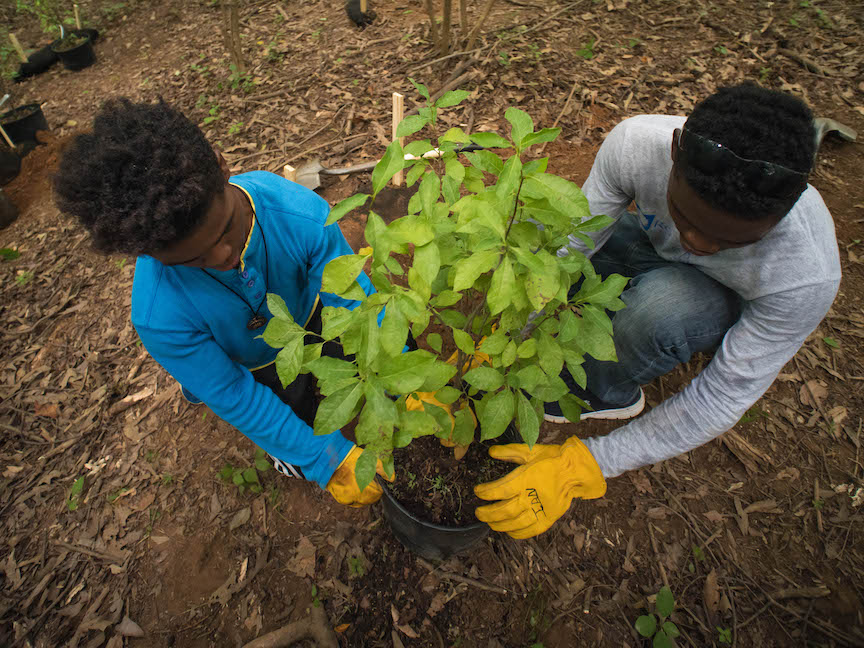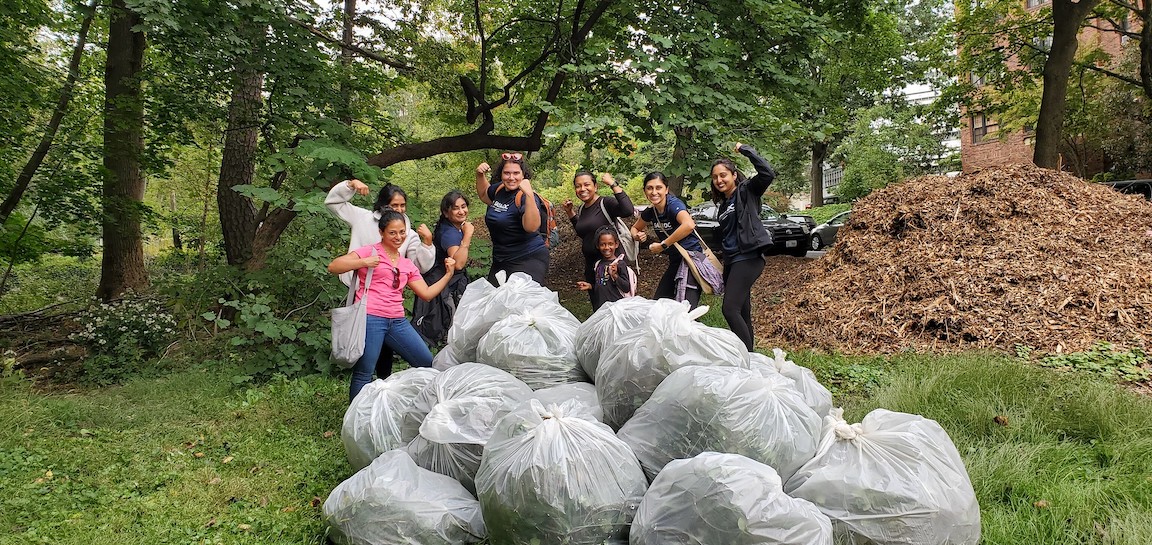Even the National Park Service needs a little help every now and then. This is one of the roles of Rock Creek Conservancy (RCC), a Bethesda, MD nonprofit that supports the National Park Service in Rock Creek Park, a large urban park that bisects the Northwest quadrant of Washington, D.C.
Created by an Act of Congress in 1890, Rock Creek (National) Park is critical green space in an urban landscape. At 1,754 acres, it is twice the size of New York’s Central Park and packs in 32 miles of hiking trails and paths to explore. Every year, Rock Creek Park hosts millions of visitors who picnic, fish, run, hike, ride, and simply enjoy the park. If they are paying particularly close attention, they might even glimpse migratory songbirds, wild turkey, or a coyote or two.
“Park visitors can go on a hike in the heart of DC and feel that they’re in the middle of the wilderness somewhere,” explains Kelsey Pramik, senior development and communications manager for Rock Creek Conservancy. “It truly is an island of nature in the heart of the city.”
This very special urban oasis is also home to the Hay’s spring amphipod, an endangered species not found anywhere else in the world!
Beyond the Park
Although Rock Creek Park is officially run by the National Park Service, RCC steps in to fill in the gaps. RCC leverages its army of 4,000 volunteers to install benches and wayfinding signage, pick up trash, remove invasive plants (with a goal of less than 5% invasive species groundcover), as well as advocate for water quality in the broader watershed that impacts the water quality of the park.
Indeed, Rock Creek Conservancy is the voice for the entire Rock Creek watershed, working to create change at the individual, community, and policy levels. Rock Creek meanders 33 miles through Montgomery County and Washington, DC, crossing federal lands as well as District, city, county, and state boundaries.
Out in the community, one of RCC’s primary initiatives is to promote “green infrastructure,” defined as natural solutions that help to fight stormwater runoff. “When it rains heavily, and that rain hits a paved surface, it runs off in a torrent, picking up oil and pollutants as it goes,” says Pramik. “Green infrastructure refers to the use of bio swells, or sloping pits planted with local species, that help the land drain more slowly and filter the water as it does.”
To create these islands of nature, RCC works with city grants. Green infrastructure comes in all different sizes, from medians in the roadways to covering entire city blocks. It must be built correctly and maintained to ensure that it continues to function properly. RCC tracks the sites, creates a rotation schedule, and sends its volunteers to dig out and replant, as necessary, to keep them functioning properly.

“Our green infrastructure coordinators not only build these sites, but they work with the community to educate and encourage them to adopt healthy water management practices in their neighborhoods,” Pramik explains. “They knock on doors in priority areas and ask people to adapt best practices like putting in rain barrels or retrofitting drainage pipes.”
Recreate Responsibly
One of Rock Creek Conservancy’s other priorities is a community education initiative called “Recreate Responsibly,” where residents and park visitors are taught about responsible recreation that promotes enjoyment but also protects the fragile ecosystem in and around Rock Creek.
“People don’t realize how much impact we human beings (and our furry friends) have on a park ecosystem,” says Pramik. “Hikers can damage the forest understory, dogs can catch and kill wild birds, and in the summer, bacteria and sunscreen coming off people wading in the creek can create havoc with the water quality.”
RCC is also responsible for preservation of other pieces of history, such as the historic Carter Barron Amphitheater in the heart of the park. The venue has hosted the likes of Nat King Cole, Louis Armstrong, Ella Fitzgerald, and the Boss (Bruce Springsteen) but closed in 2017 due to structural damage. RCC has launched a restoration effort with the goal to restore and reopen the amphitheater within three to five years.
Whether it’s protecting water quality or a historic structure, RCC’s mission is about responsible stewardship. After all, nature is a fragile thing, and it takes us all to protect it.
“The thing that surprises people the most is that, while Rock Creek Park looks beautiful and thriving, it is actually on the brink,” concludes Pramik. “It’s hard to get people to understand because all they see is green. But we have climate change, areas that are completely taken over by invasive plants, and real challenges with water quality. But with our mini oasis concept, we are proving — oasis by oasis — that it’s possible to not just protect our natural treasures, but to restore them, as well.”
To learn more about Rock Creek Conservancy and how you can get involved, visit rockcreekconservancy.org.
Sustainably,
Bobby Firestein
Rock Creek Conservancy is our last featured partner from our 2022 Ecoprint calendar. But don’t worry, we have partnered with 13 different organizations for our 2023 calendar, all dedicated to helping solve environmental challenges in the Chesapeake Bay. To get your own 2023 Ecoprint calendar, click the button below.

